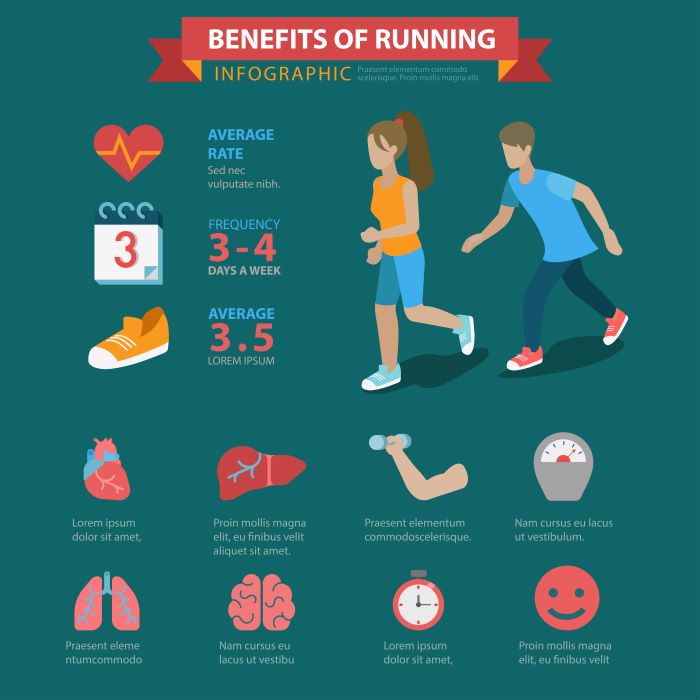Engaging in a running routine is an exhilarating way to boost your cardiovascular health and endurance, but it’s essential to remember that your journey doesn’t end when you cross the finish line. Understanding the importance of post-run workouts is crucial for enhancing your overall fitness and ensuring long-term progress.
After a run, your muscles undergo a significant amount of stress. By incorporating targeted exercises, you can:
- Enhance Recovery: Post-run workouts help in alleviating muscle soreness and stiffness. Gentle stretching and mobility work can restore flexibility and prevent injuries.
- Build Strength: Strength training exercises that focus on core and lower body muscles can improve your running efficiency. This includes squats, lunges, and planks that complement the repetitive motion of running.
- Improve Performance: By adding variety to your routine, you not only prevent burnout but also enhance your overall performance. This can lead to faster times and greater endurance on your next run.
Moreover, a well-rounded workout regime that includes post-run exercises fosters a healthier lifestyle. It encourages consistency and motivates you to keep pushing your limits. Visit our website to learn more and get started today! Click here.
Best Stretching Exercises After Running

Incorporating stretching exercises into your post-run routine is vital for maintaining flexibility and preventing injuries. After your run, your muscles are warm and more pliable, making it the perfect time to stretch. Here are some of the best stretching exercises to include:
- Hamstring Stretch: Sit on the ground with one leg extended and the other bent. Reach towards your toes on the extended leg, feeling the stretch in your hamstrings. Hold for 15-30 seconds and switch legs.
- Quad Stretch: Stand on one leg and pull the opposite foot towards your glutes. Keep your knees close together and push your hips forward for a deeper stretch. Hold for 15-30 seconds and switch sides.
- Calf Stretch: Place your hands on a wall or a sturdy surface, step one foot back, and press the heel into the ground. Keep your back leg straight and bend your front knee. Hold for 15-30 seconds, then switch legs.
- Hip Flexor Stretch: Kneel on one knee with the other foot in front, creating a 90-degree angle. Push your hips forward while keeping your back straight to stretch the hip flexors. Hold for 15-30 seconds and switch sides.
- IT Band Stretch: While standing, cross one leg behind the other and lean to the side of the leg that is behind. This will help stretch the iliotibial band. Hold for 15-30 seconds and switch sides.
These stretches not only promote recovery but also enhance your running performance by increasing range of motion and reducing muscle tightness. Make them a regular part of your post-run routine for optimal results.
Strength Training: Building Muscles After Running

Engaging in strength training after your running sessions is crucial for building muscle and enhancing overall performance. While running primarily works the cardiovascular system and lower body muscles, integrating strength exercises can help create a well-rounded fitness routine. Here are some effective strength training exercises to consider:
- Squats: Perform bodyweight squats or add weights to challenge yourself. Squats target the quadriceps, hamstrings, and glutes, which are essential for powerful running strides.
- Deadlifts: This exercise focuses on the posterior chain, including the hamstrings, glutes, and lower back. Using dumbbells or a barbell, perform deadlifts to build strength and stability.
- Lunges: Forward, backward, or lateral lunges help improve balance and coordination while strengthening the legs. Incorporate weights for added resistance as you progress.
- Core Exercises: A strong core supports better running form and efficiency. Planks, Russian twists, and bicycle crunches are excellent choices for building core strength.
- Push-Ups: This classic exercise not only strengthens the upper body but also engages the core. Modify as needed, starting from your knees if necessary.
Incorporating these strength training exercises into your weekly routine can significantly enhance your running performance, reduce injury risk, and lead to overall muscle development. Aim for at least two strength training sessions per week, ideally on non-consecutive days to allow for recovery.
Incorporating Cross-Training into Your Routine

Cross-training is a versatile approach that allows runners to diversify their workouts, improve overall fitness, and prevent burnout. By engaging in different forms of exercise, you not only give your running muscles a break but also develop strength and endurance in new ways. Here are several effective cross-training activities to consider:
- Cycling: Whether on a stationary bike or outdoors, cycling is an excellent low-impact activity that helps build leg strength and cardiovascular endurance without the joint strain associated with running.
- Swimming: This full-body workout is perfect for recovery days. It enhances cardiovascular fitness while being gentle on the joints, making it an ideal choice for runners looking to maintain fitness without added impact.
- Yoga: Practicing yoga can improve flexibility, balance, and mental focus. Incorporating yoga into your routine helps reduce the risk of injury and aids in muscle recovery post-run.
- Rowing: Utilizing a rowing machine provides a great full-body workout that targets both the upper and lower body while building cardiovascular endurance.
- Strength Classes: Participating in group fitness classes focusing on strength and conditioning can provide motivation and introduce new exercises that complement your running.
Integrating cross-training into your weekly regimen not only enhances your running performance but also keeps your workouts exciting. Aim for at least one or two cross-training sessions each week, allowing your body to recover from the repetitive nature of running while still maintaining cardiovascular fitness and strength.
Recovery Techniques to Enhance Performance

Recovery is a critical component of any training regimen, especially for runners. Proper recovery techniques not only help alleviate soreness but also enhance overall performance by allowing the body to rebuild and strengthen. Here are some effective recovery strategies to integrate into your routine:
- Stretching: Post-run stretching can improve flexibility and aid in muscle recovery. Focus on major muscle groups such as the hamstrings, quadriceps, and calves to maintain mobility and prevent tightness.
- Foam Rolling: Using a foam roller can help release muscle tension and improve blood flow to sore areas. Regular foam rolling can assist in reducing the risk of injury and expedite recovery.
- Hydration: Staying hydrated is essential for optimal recovery. Replenishing fluids lost during your run helps maintain performance levels and assists in muscle repair.
- Nutrition: Consuming a balanced post-run meal or snack that includes carbohydrates and protein can promote recovery. Aim for foods like smoothies, yogurt, or a whole-grain sandwich to refuel effectively.
- Active Recovery: Engaging in low-intensity activities, such as walking or light cycling, can promote blood circulation and help alleviate soreness without placing additional strain on your body.
Incorporating these recovery techniques into your routine not only aids in muscle recovery but also prepares your body for future workouts. Prioritizing recovery is essential to maximize your running performance and minimize injury risks.
Creating a Balanced Workout Plan Post-Run
After a run, creating a balanced workout plan is essential for building strength, improving endurance, and maintaining overall fitness. A well-structured post-run workout routine should incorporate various exercise modalities to ensure that all muscle groups are engaged and recovery is optimized. Here’s how to create that balance:
- Strength Training: Incorporate bodyweight exercises or resistance training to strengthen key muscles that support running. Focus on exercises such as squats, lunges, and planks, which target both the lower and core muscles, enhancing your running performance.
- Cross-Training: Including activities like cycling, swimming, or yoga can provide a break from the repetitive nature of running while promoting cardiovascular fitness and flexibility. These activities help reduce the risk of overuse injuries associated with running.
- Mobility Work: Incorporate dynamic movements and mobility drills that enhance joint range of motion. This will not only aid in recovery but also improve your running form and efficiency.
- Rest Days: Ensure that your workout plan includes scheduled rest days. Allowing your body time to recover is crucial for muscle repair and growth, preventing burnout and injuries.
By focusing on these elements, you can develop a comprehensive post-run workout plan that complements your running routine while enhancing your overall fitness levels. Visit our website to learn more and get started today! Click here.


